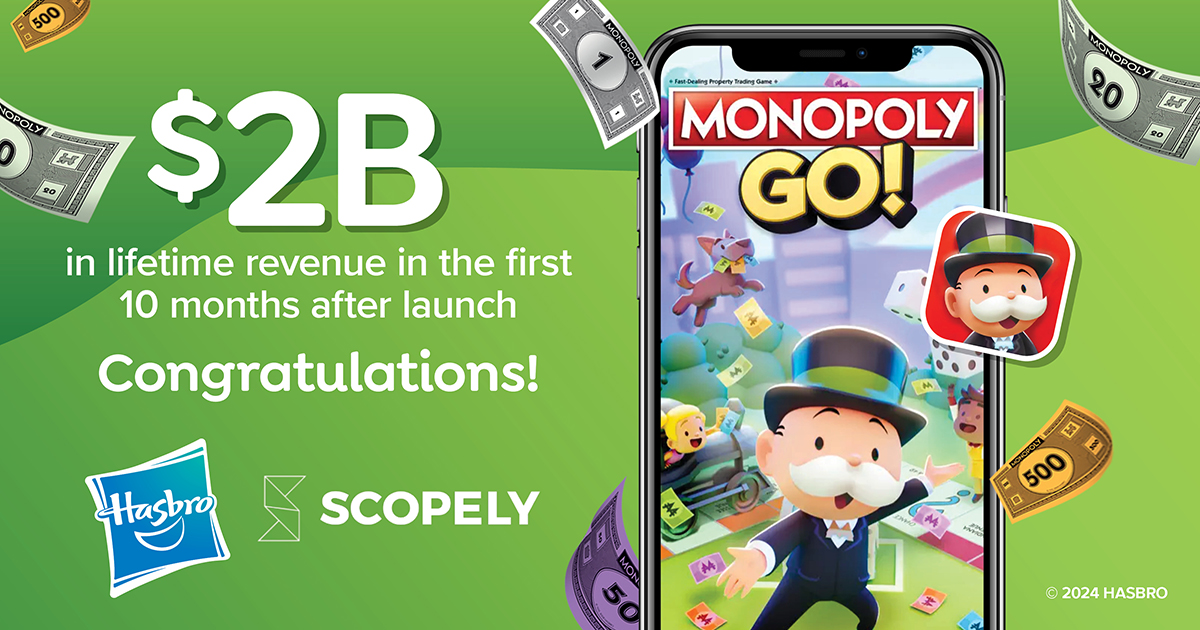As hyper-casual games are built to target a mass audience, our creatives must be super easy to understand. When starting the very first stages of your creatives planning, follow the list below to make sure your creatives are undefeatable.
We’ll start with the tips that apply to all hyper-casual genres, and then we’ll break down the different sub-genres and our recommendations for each one’s creatives.
Pure gameplay – When creating your video, try to stick as much as possible to the gameplay, showing your players the actual game, so that they can understand how to play it. Pure gameplay is a crucial element of a successful hyper-casual creative because there are no tutorials, so the job of teaching users how they could play your game is actually done by the creatives themselves.
Additionally, gameplay helps ensure that the players get exactly what they expected (i.e., the video ad represented in the storefront, and later in the actual game). This will help decrease CPI, while improving CVR and retention, since the ad viewer will not get disappointed when playing the game.
In order for your pure gameplay to appeal to the masses it needs to be structured strategically — so that your video will:
- Explain the game as clearly as possible – Make sure the player understands the pure gameplay even if they pause after a few seconds
- Eye-catching & containing satisfying moments – Create a ‘wow’ moment (satisfying elements or animations). Wow moments can help make the players stop what they’re doing and continue watching the ad, and potentially get them to click on it. See below examples of wow moments from our games Mystical Mixing and Dig Deep:
- Remove anything that distracts from the core gameplay loop – Only feature UI elements that are essential to the gameplay
We recommend A/B testing each of the below elements, to ultimately create the most successful creative possible:
Mechanics & controls – We recommend creating 2, 3, or 4 versions of the creative with different mechanics – this will help determine what is the most satisfying way to play the game. As an example, you can create one version of the game with a joystick and the other version with drawing controls.
Camera angles – It’s important to test a few videos with different camera angles like zoomed-in, zoomed-out, top-down, side view, back view, or an isometric view. The goal of experimenting with camera angles is to find the most satisfying, clear angle to entice the player and get them excited to play the game.
Colors – It’s imperative to stick to color plates that make sense (i.e, red stickmen are the enemy, and the player is the blue stickman). Additionally, we recommend testing different color backgrounds and gameplay environments. At times, we can even make the game’s colors more neutral like grays in order to focus the player on the key action.
Pro tip: leverage the virtual hand – This enables your creative to accomplish two things:
- Show viewers how to play the game
- Explain the game’s objective and how to win it — all in a purely visual way
Take for example puzzles or simulations, without a virtual hand, the video might not make it entirely clear to the player what action they need to do to play the game.
Now that we’ve addressed what any and every hyper-casual creative needs to include (no matter the sub-genre), let’s break down what winning creatives must include, but this time according to sub-genre.
Perfecting your creatives according to sub-genre: this is how to do it
Runners – One of the best practices for runner games is showing the characters on the lower 3rd (or lower part) of the screen as seen in the example below:
Another great practice for runner games are fail videos – this will explain to the player how to play the game by showing what not to do.
We recommend applying this element in the first few seconds of the video — but not too early! Otherwise, viewers won’t have time to understand the game without enough of a glimpse to learn how to play it. If it takes a player more than 3 – 5 seconds to understand the game, then it means it’s too hard to understand.
Furthermore, this 3 – 5 second rule is especially true for runners, since the goal of a runner game creative is to really stand out, so uniqueness is key. You can make this uniqueness happen by showing something satisfying — unique characters, color palettes, etc.
Lastly, If you have multiplying gates and obstacles in the gameplay, then it’s crucial that you include these elements in the creative as well since it can tremendously add to the satisfaction of the game.
Puzzles – The two words to always keep in mind when creating and testing creatives for a puzzle game are “fail & frustration”. A hyper-casual puzzle’s creative’s most important objective is to represent the game in a way that’s super clear and easy to understand so that audiences of all ages can understand how to play it.
Multi Maze is a great example that ticks all of the above tips and creates an easy-to-understand video. The controls and mechanics are easy to understand, as well as what to do and what not to do.
Simulation / ASMR – One thing you can generally assume about your audience from the get-go with this sub-genre is that the players interested in your game are also interested in activities like nail painting and tie dying in real life. As such, a few best practices for simulation sub-genre creatives include:
- Staying as close as possible to the original trend or to the activity you’re imitating while giving it a hyper-casual look (i.e., same order, same setting, etc)
- Creating a wow moment with a beautiful outcome (i.e., a stunning tie dye design)
- Creating a fail moment or prank (i.e., a gross dessert instead of an appetizing one)
Only in simulation games is it recommended to speed up the game play in the creative, but this must be done very thoughtfully. Below is an example of how this is done in DIY Joystick:
Idle Arcades – The creatives should focus on:
- The key action – As an example, In our Dig Deep game below, the main focus of the creative is the character digging
- Focus on one step – Look for the most satisfying step in the game, focus and zoom in on this step
Creatives in idle arcades are crucial, since these games are prone to higher CPI. The best way to tackle this is to show a visual progression of the upgrade system or even an exaggerated change that is not present in the game per se.
Another promising tactic for idle arcades creatives is showing ‘extreme stacking’, different camera views, vivid color palettes, and dramatizing or highlighting objects you want the player to look at.
Clickers
Our rule of thumb for clickers creatives is that you must always show something eye-catching. Showing a virtual hand can be very effective here, since the action is clicking. Because clicking usually causes the creative to fast forward and stopping clicking stops it from moving, we recommend showing a big, emphasized change between clicking and not clicking.
Another recommendation is to show a visual progression of the upgrade, since the player’s progress is largely dependent on it. Lastly, it’s important to show the visual ‘feedback’ that the player receives for clicking or upgrading.
Take every subgenre to the next level
Beginning your very first steps of creative planning can often feel like shooting in the dark. Where to begin? Starting from a blank slate can be daunting. That’s exactly why working with a cheat sheet so that you create winning creatives will save you time, energy, and frustration. Once your cheat sheet teaches you what to prioritize and gives you the most important, relevant input on each subgenre, you’ll be in tip-top shape to crush your next full launch.

3,764













 4 minutes
4 minutes







 2 minutes
2 minutes

